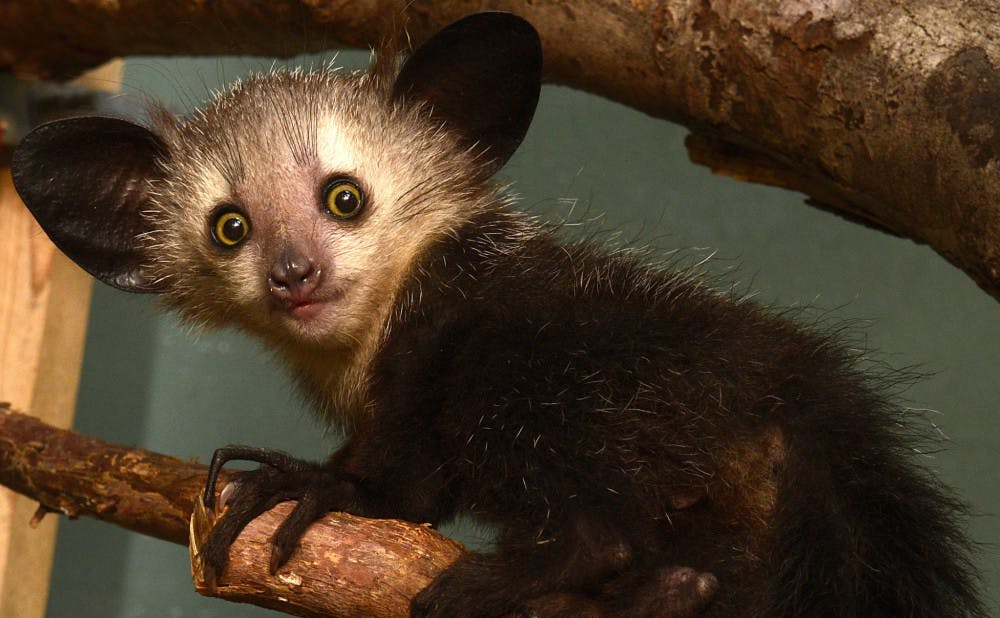Need some light news to distract you from the stress of impending midterms? Check out this new baby lemur.
The Duke Lemur Center recently announced the arrival of a rare baby aye-aye, named Agatha Christie after the bestselling mystery writer. She is the first aye-aye born at the Lemur Center in six years.
“The logo of the center is the aye-aye, so they’re really special to us,” said Sara Clark, director of communications at the Lemur Center.
Although Agatha was born June 7, the Lemur Center has kept the news hidden until the newborn could gain strength, Clark explained. At only 74 grams, Agatha’s birth weight was two-thirds of the typical weight for newborn aye-ayes, necessitating extra assistance by the Lemur Center’s veterinarians.
Clark noted that Agatha is one of the smallest aye-aye infants ever to survive. During the months after her birth, staff members gave her 24/7 care such as providing supplemental warmth through an incubator and feeding her formula every couple of hours. Vet technicians also set up a baby monitor camera to watch Agatha and her mom interact.
“We’ve been caring for her and making sure she is thriving before making the public announcement,” Clark said. “Our staff has been amazing.”
Aye-ayes are endangered primates native to Madagascar and recognizable by their bushy tails and bony middle fingers. Habitat destruction through logging and agriculture has drastically reduced their numbers, leading to fewer than 50 held in captivity around the world now. Agatha is one of 24 aye-ayes in the United States, and the third one born in the last two years.
Her birth came about after the Association of Zoos and Aquariums’ Species Survival Plan approved her parents Medusa and Poe as a good genetic match. Medusa previously had two babies, and Poe arrived at the Lemur Center from Madagascar in 1987 as one of the first aye-ayes imported to the U.S., Clark noted.
“In wild, you can generally say an average lifespan is 15 years,” she said. “Here, we can double that.”
Aye-ayes at the Lemur Center are given names that have a mystery or horror quality, Clark explained, since they have a mysterious look.
Agatha’s birth is a high point for the Lemur Center, which lost four aye-ayes—Morticia, Norman Bates, Merlin and Angelique—last October. A two-month investigation revealed that a natural toxin in avocados that the animals ate the previous day caused damage to their heart muscles, resulting in their deaths.
“For a lot of our staff, October 26 was the most painful day of their professional lives,” Clark said. “[Agatha’s birth] gives a sense of larger purpose in our mission for aye-ayes’ survival.”
Agatha will remain alongside her mother for a few years to learn survival skills like building nests and searching for food, she noted The Lemur Center supports lemurs born there for their entire lives. However, there is a possibility that Agatha could move to a different zoo or conservation center that has a potential mate for her.
Although visitors are not able to see Agatha from the tour path, two other aye-ayes named Endora and Ozma are visible.
In addition to Agatha, the Lemur Center welcomed two blue-eyed black lemurs—five-year-old male Mangamaso and three-year-old female Velona—from a nature center called Parc Ivoloina in Madagascar in August.
Get The Chronicle straight to your inbox
Signup for our weekly newsletter. Cancel at any time.

